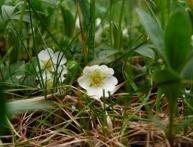Rosehip May, its features and beneficial properties

They love to plant rose hips in gardens for their beauty, fragrance, and numerous beneficial properties, and sometimes they use them as a living, thorny hedge.
Rosehip May - one of the varieties of rosehip, of which there are a lot, is a small shrub that, under suitable conditions, reaches 2 meters in height. Its branches are shiny, thin, strewn with curved strong thorns. Single flowers, large, with five petals, can be colored from light pink to intense burgundy, bloom from May to June. The berry ripens at the end of August, fleshy, red or orange, spherical. After harvesting, the fruits must be dried immediately so that all their beneficial properties are preserved.
May rosehip:
1. Contains: vitamin C, P, B2, K, A1, fruit acids, tannins, pectin, coloring, tannins, sugar, potassium, phosphorus, magnesium, carotenoids, flavonoids (substances that affect enzyme activity).
2. Has the following effects: choleretic, antiscorbutic, astringent, diuretic, vasodilator, laxative. Helps increase the body's resistance to poisoning and infections, stimulate the adrenal glands.
Rose hips can be grown without any problems and do not require careful care, such as roses. However, there is no need to start the plant and should be sprayed against pests and diseases, although rose hips are less susceptible to them.It is also necessary to prune the May rose hips before growth begins, that is, in early spring, and remove very old shoots. The easiest way to propagate rose hips is by root shoots; rose hips produce a lot of them.
To support the body, it is recommended to take fresh rosehip infusions, but before a course of treatment you should consult with your doctor.









Comments
Rose hips also need to be brewed properly so that all the beneficial substances are preserved. So there are a lot of nuances...